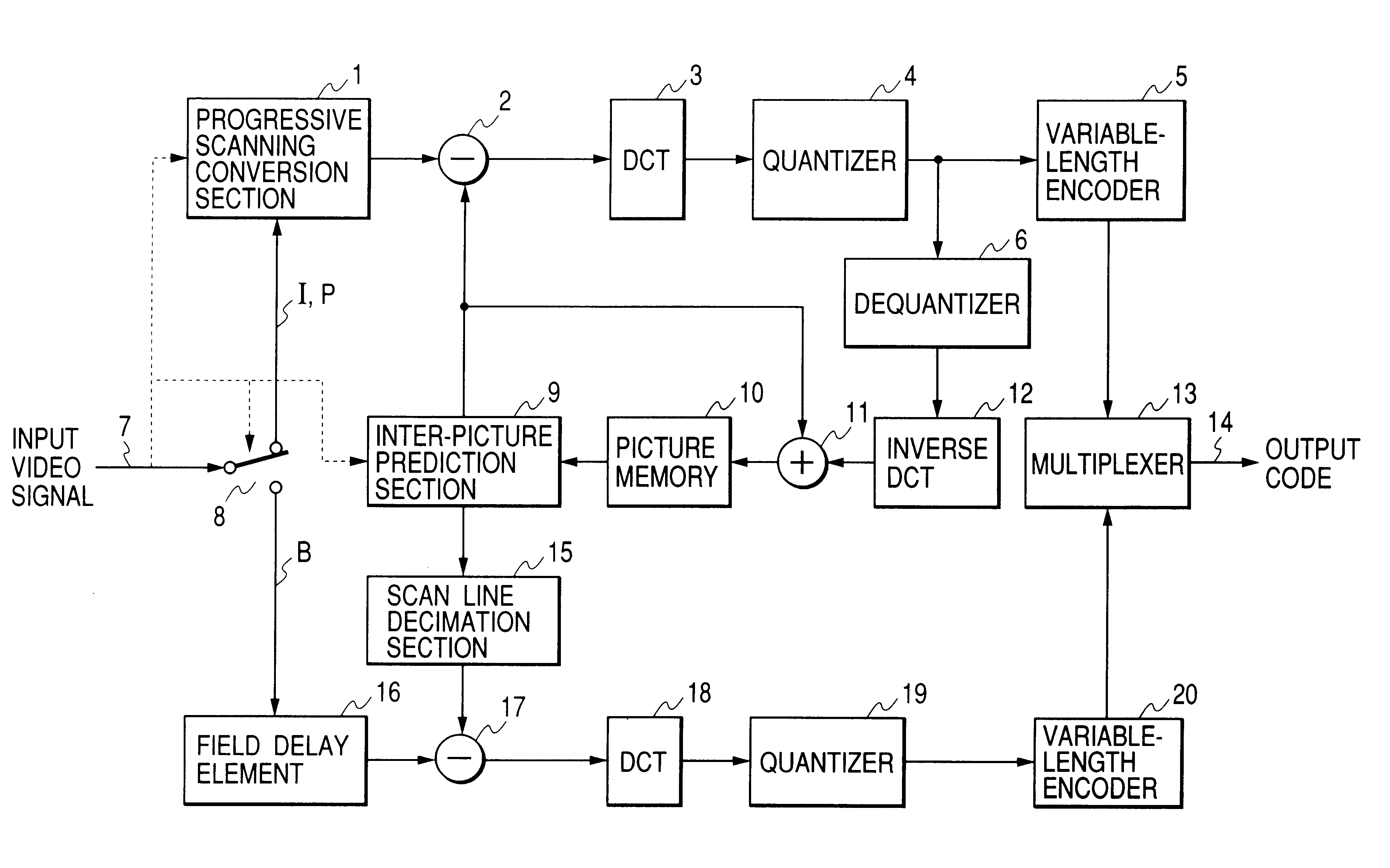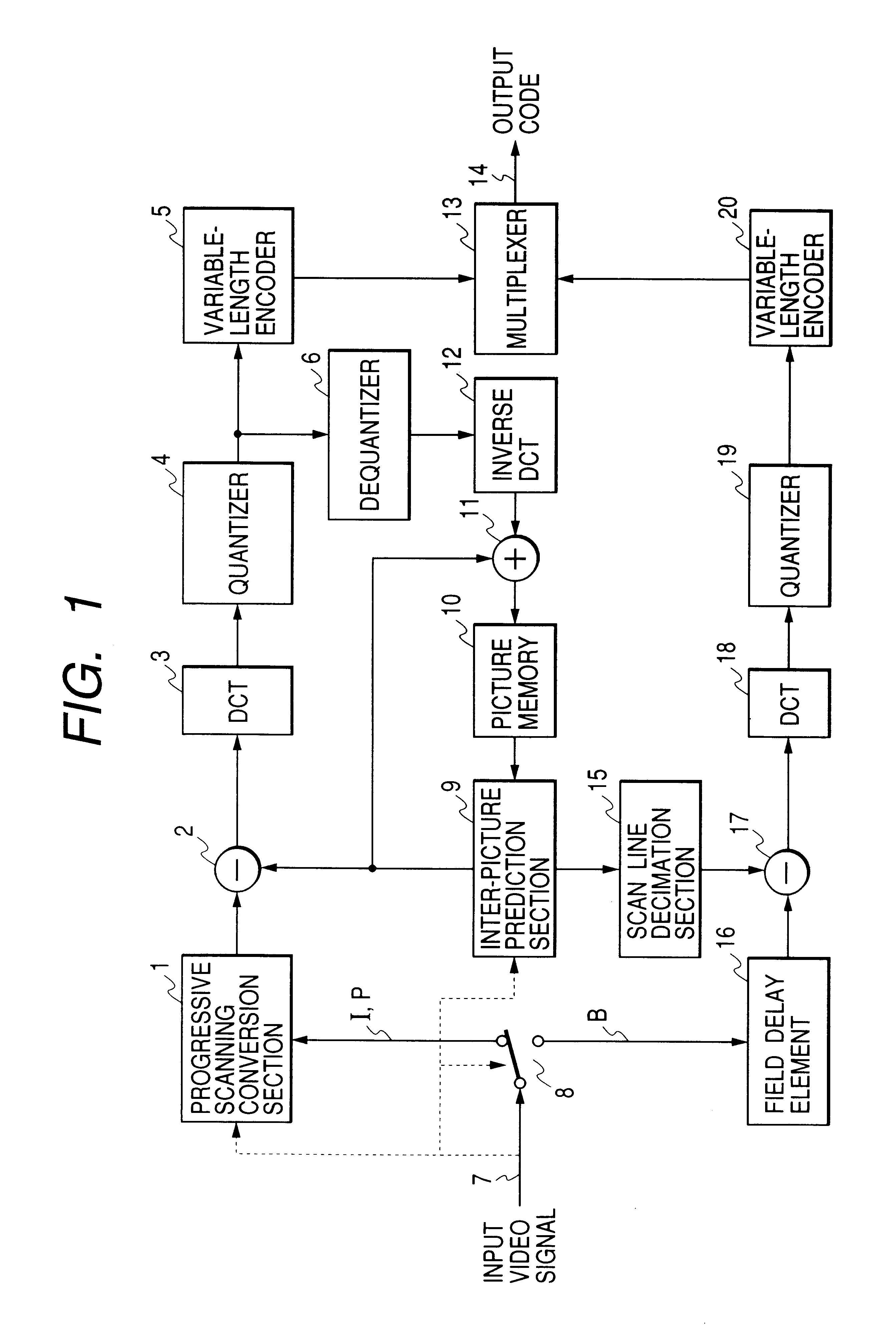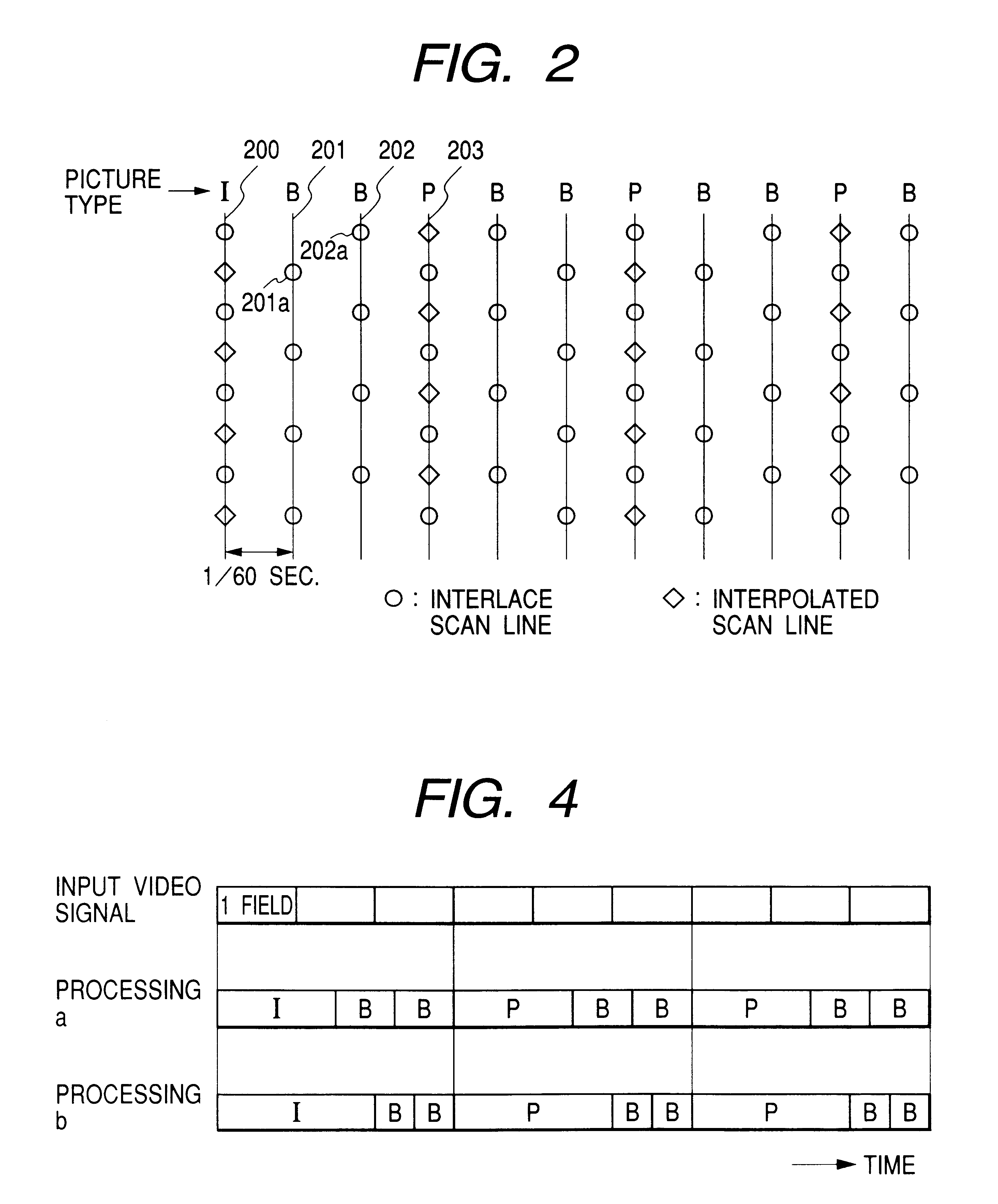Interplaced video signal encoding and decoding method, and encoding apparatus and decoding apparatus utilizing the method, providing high efficiency of encoding by conversion of periodically selected fields to progressive scan frames which function as reference frames for predictive encoding
a video signal and inter-frame prediction technology, applied in the direction of color television with bandwidth reduction, television systems, instruments, etc., can solve the problems of generating excessively large amounts of code in the predictive encoding process, unable to achieve a high efficiency of data compression through encoding, and inability to use a simple inter-frame prediction method to appropriate the purpose of picture encoding
- Summary
- Abstract
- Description
- Claims
- Application Information
AI Technical Summary
Benefits of technology
Problems solved by technology
Method used
Image
Examples
Embodiment Construction
An embodiment of a motion-compensation encoding apparatus according to the present invention will be described in the following referring to the system block diagram of FIG. 1. In FIG. 1, elements that are identical in function and operation to elements of the prior art video encoding apparatus example of FIG. 5 are designated by identical numerals to those of FIG. 5. Basically, the apparatus of FIG. 1 differs from that of FIG. 5 by including a progressive scanning conversion section 1 and scanning line decimation section 15. Also, the frame delay element 61 of the prior art apparatus of FIG. 5 is changed to a field delay element 16, and the operation of the input signal selection switch 8 and of the inter-picture prediction section 9 respectively differ from those of the input signal selection switch 56 and inter-picture prediction section 57 of the prior art video encoding apparatus example of FIG. 5.
The processing executed with this embodiment will be described by comparison with...
PUM
 Login to View More
Login to View More Abstract
Description
Claims
Application Information
 Login to View More
Login to View More - R&D
- Intellectual Property
- Life Sciences
- Materials
- Tech Scout
- Unparalleled Data Quality
- Higher Quality Content
- 60% Fewer Hallucinations
Browse by: Latest US Patents, China's latest patents, Technical Efficacy Thesaurus, Application Domain, Technology Topic, Popular Technical Reports.
© 2025 PatSnap. All rights reserved.Legal|Privacy policy|Modern Slavery Act Transparency Statement|Sitemap|About US| Contact US: help@patsnap.com



